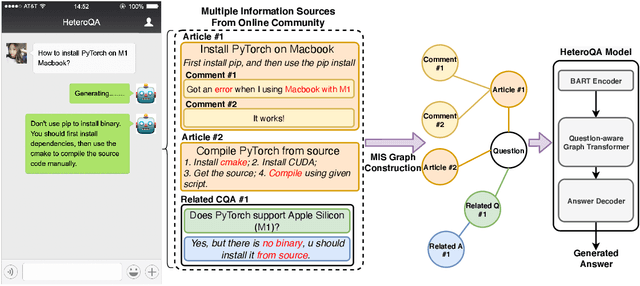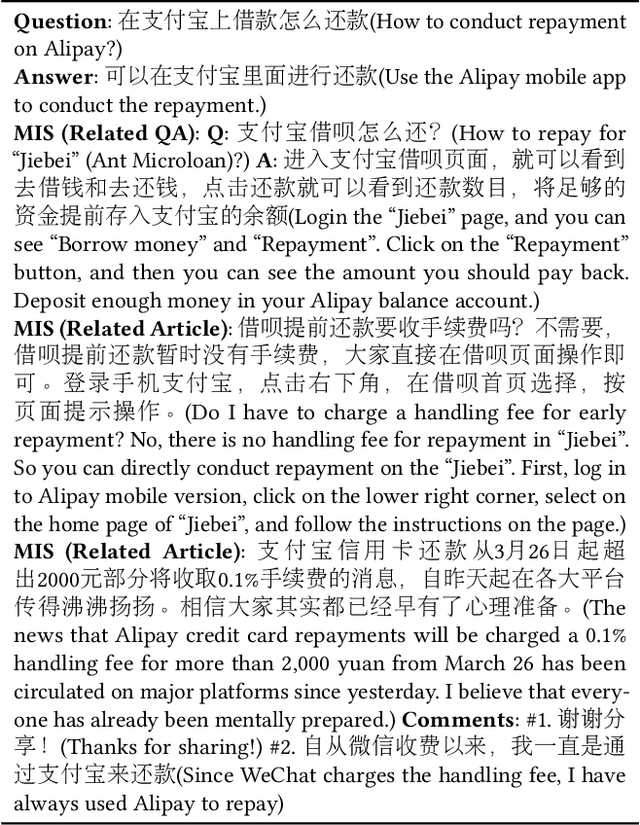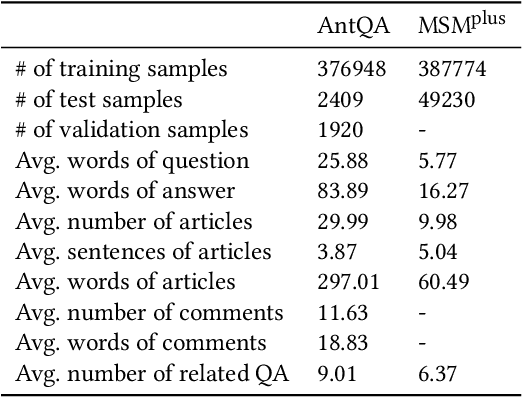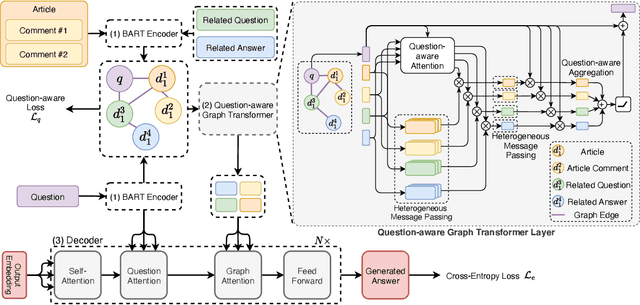Yuchi Zhang
Bridging Scale Discrepancies in Robotic Control via Language-Based Action Representations
Dec 09, 2025Abstract:Recent end-to-end robotic manipulation research increasingly adopts architectures inspired by large language models to enable robust manipulation. However, a critical challenge arises from severe distribution shifts between robotic action data, primarily due to substantial numerical variations in action commands across diverse robotic platforms and tasks, hindering the effective transfer of pretrained knowledge. To address this limitation, we propose a semantically grounded linguistic representation to normalize actions for efficient pretraining. Unlike conventional discretized action representations that are sensitive to numerical scales, the motion representation specifically disregards numeric scale effects, emphasizing directionality instead. This abstraction mitigates distribution shifts, yielding a more generalizable pretraining representation. Moreover, using the motion representation narrows the feature distance between action tokens and standard vocabulary tokens, mitigating modality gaps. Multi-task experiments on two benchmarks demonstrate that the proposed method significantly improves generalization performance and transferability in robotic manipulation tasks.
MoE-GraphSAGE-Based Integrated Evaluation of Transient Rotor Angle and Voltage Stability in Power Systems
Nov 05, 2025Abstract:The large-scale integration of renewable energy and power electronic devices has increased the complexity of power system stability, making transient stability assessment more challenging. Conventional methods are limited in both accuracy and computational efficiency. To address these challenges, this paper proposes MoE-GraphSAGE, a graph neural network framework based on the MoE for unified TAS and TVS assessment. The framework leverages GraphSAGE to capture the power grid's spatiotemporal topological features and employs multi-expert networks with a gating mechanism to model distinct instability modes jointly. Experimental results on the IEEE 39-bus system demonstrate that MoE-GraphSAGE achieves superior accuracy and efficiency, offering an effective solution for online multi-task transient stability assessment in complex power systems.
Conversational Recommender System and Large Language Model Are Made for Each Other in E-commerce Pre-sales Dialogue
Oct 23, 2023



Abstract:E-commerce pre-sales dialogue aims to understand and elicit user needs and preferences for the items they are seeking so as to provide appropriate recommendations. Conversational recommender systems (CRSs) learn user representation and provide accurate recommendations based on dialogue context, but rely on external knowledge. Large language models (LLMs) generate responses that mimic pre-sales dialogues after fine-tuning, but lack domain-specific knowledge for accurate recommendations. Intuitively, the strengths of LLM and CRS in E-commerce pre-sales dialogues are complementary, yet no previous work has explored this. This paper investigates the effectiveness of combining LLM and CRS in E-commerce pre-sales dialogues, proposing two collaboration methods: CRS assisting LLM and LLM assisting CRS. We conduct extensive experiments on a real-world dataset of Ecommerce pre-sales dialogues. We analyze the impact of two collaborative approaches with two CRSs and two LLMs on four tasks of Ecommerce pre-sales dialogue. We find that collaborations between CRS and LLM can be very effective in some cases.
Towards Personalized Review Summarization by Modeling Historical Reviews from Customer and Product Separately
Jan 27, 2023Abstract:Review summarization is a non-trivial task that aims to summarize the main idea of the product review in the E-commerce website. Different from the document summary which only needs to focus on the main facts described in the document, review summarization should not only summarize the main aspects mentioned in the review but also reflect the personal style of the review author. Although existing review summarization methods have incorporated the historical reviews of both customer and product, they usually simply concatenate and indiscriminately model this two heterogeneous information into a long sequence. Moreover, the rating information can also provide a high-level abstraction of customer preference, it has not been used by the majority of methods. In this paper, we propose the Heterogeneous Historical Review aware Review Summarization Model (HHRRS) which separately models the two types of historical reviews with the rating information by a graph reasoning module with a contrastive loss. We employ a multi-task framework that conducts the review sentiment classification and summarization jointly. Extensive experiments on four benchmark datasets demonstrate the superiority of HHRRS on both tasks.
Towards Generalized Models for Task-oriented Dialogue Modeling on Spoken Conversations
Mar 08, 2022



Abstract:Building robust and general dialogue models for spoken conversations is challenging due to the gap in distributions of spoken and written data. This paper presents our approach to build generalized models for the Knowledge-grounded Task-oriented Dialogue Modeling on Spoken Conversations Challenge of DSTC-10. In order to mitigate the discrepancies between spoken and written text, we mainly employ extensive data augmentation strategies on written data, including artificial error injection and round-trip text-speech transformation. To train robust models for spoken conversations, we improve pre-trained language models, and apply ensemble algorithms for each sub-task. Typically, for the detection task, we fine-tune \roberta and ELECTRA, and run an error-fixing ensemble algorithm. For the selection task, we adopt a two-stage framework that consists of entity tracking and knowledge ranking, and propose a multi-task learning method to learn multi-level semantic information by domain classification and entity selection. For the generation task, we adopt a cross-validation data process to improve pre-trained generative language models, followed by a consensus decoding algorithm, which can add arbitrary features like relative \rouge metric, and tune associated feature weights toward \bleu directly. Our approach ranks third on the objective evaluation and second on the final official human evaluation.
Precognition in Task-oriented Dialogue Understanding: Posterior Regularization by Future Context
Mar 07, 2022



Abstract:Task-oriented dialogue systems have become overwhelmingly popular in recent researches. Dialogue understanding is widely used to comprehend users' intent, emotion and dialogue state in task-oriented dialogue systems. Most previous works on such discriminative tasks only models current query or historical conversations. Even if in some work the entire dialogue flow was modeled, it is not suitable for the real-world task-oriented conversations as the future contexts are not visible in such cases. In this paper, we propose to jointly model historical and future information through the posterior regularization method. More specifically, by modeling the current utterance and past contexts as prior, and the entire dialogue flow as posterior, we optimize the KL distance between these distributions to regularize our model during training. And only historical information is used for inference. Extensive experiments on two dialogue datasets validate the effectiveness of our proposed method, achieving superior results compared with all baseline models.
HeteroQA: Learning towards Question-and-Answering through Multiple Information Sources via Heterogeneous Graph Modeling
Dec 27, 2021



Abstract:Community Question Answering (CQA) is a well-defined task that can be used in many scenarios, such as E-Commerce and online user community for special interests. In these communities, users can post articles, give comment, raise a question and answer it. These data form the heterogeneous information sources where each information source have their own special structure and context (comments attached to an article or related question with answers). Most of the CQA methods only incorporate articles or Wikipedia to extract knowledge and answer the user's question. However, various types of information sources in the community are not fully explored by these CQA methods and these multiple information sources (MIS) can provide more related knowledge to user's questions. Thus, we propose a question-aware heterogeneous graph transformer to incorporate the MIS in the user community to automatically generate the answer. To evaluate our proposed method, we conduct the experiments on two datasets: $\text{MSM}^{\text{plus}}$ the modified version of benchmark dataset MS-MARCO and the AntQA dataset which is the first large-scale CQA dataset with four types of MIS. Extensive experiments on two datasets show that our model outperforms all the baselines in terms of all the metrics.
AudioViewer: Learning to Visualize Sound
Dec 28, 2020



Abstract:Sensory substitution can help persons with perceptual deficits. In this work, we attempt to visualize audio with video. Our long-term goal is to create sound perception for hearing impaired people, for instance, to facilitate feedback for training deaf speech. Different from existing models that translate between speech and text or text and images, we target an immediate and low-level translation that applies to generic environment sounds and human speech without delay. No canonical mapping is known for this artificial translation task. Our design is to translate from audio to video by compressing both into a common latent space with shared structure. Our core contribution is the development and evaluation of learned mappings that respect human perception limits and maximize user comfort by enforcing priors and combining strategies from unpaired image translation and disentanglement. We demonstrate qualitatively and quantitatively that our AudioViewer model maintains important audio features in the generated video and that generated videos of faces and numbers are well suited for visualizing high-dimensional audio features since they can easily be parsed by humans to match and distinguish between sounds, words, and speakers.
Improve Diverse Text Generation by Self Labeling Conditional Variational Auto Encoder
Mar 26, 2019



Abstract:Diversity plays a vital role in many text generating applications. In recent years, Conditional Variational Auto Encoders (CVAE) have shown promising performances for this task. However, they often encounter the so called KL-Vanishing problem. Previous works mitigated such problem by heuristic methods such as strengthening the encoder or weakening the decoder while optimizing the CVAE objective function. Nevertheless, the optimizing direction of these methods are implicit and it is hard to find an appropriate degree to which these methods should be applied. In this paper, we propose an explicit optimizing objective to complement the CVAE to directly pull away from KL-vanishing. In fact, this objective term guides the encoder towards the "best encoder" of the decoder to enhance the expressiveness. A labeling network is introduced to estimate the "best encoder". It provides a continuous label in the latent space of CVAE to help build a close connection between latent variables and targets. The whole proposed method is named Self Labeling CVAE~(SLCVAE). To accelerate the research of diverse text generation, we also propose a large native one-to-many dataset. Extensive experiments are conducted on two tasks, which show that our method largely improves the generating diversity while achieving comparable accuracy compared with state-of-art algorithms.
 Add to Chrome
Add to Chrome Add to Firefox
Add to Firefox Add to Edge
Add to Edge